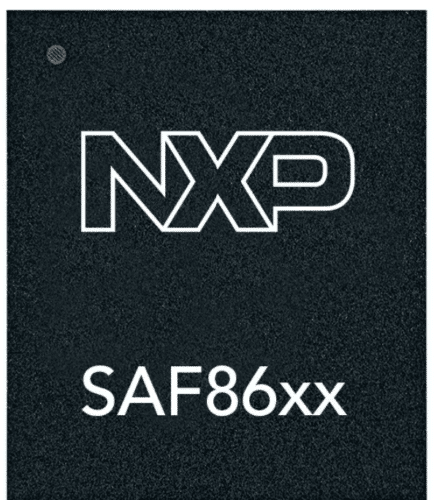The radar chip integrates features for secure data communication, supports sensor data streaming, and enables vehicle architectures with updates.

NXP Semiconductors have announced an extension of its automotive radar chip family with the new SAF86xx. This chip integrates a radar transceiver, a radar processor, and a MACsec hardware engine for secure data communication over Automotive Ethernet. Combined with NXP’s S32 processors, vehicle network connectivity, and power management, it provides a system for radar.
The radar System-on-Chip (SoC) is designed to stream radar sensor data at speeds up to 1 Gbit/s. This allows automakers to optimize the partitioning of Advanced Driver Assistance Systems (ADAS) for vehicles and ensures a transition to new architectures. Moreover, Original Equipment Manufacturers (OEMs) can introduce new radar features throughout the vehicle’s lifespan via Over-the-Air (OTA) updates.
This SoC shares an architecture with the previously introduced SAF85xx and utilizes 28 nm RFCMOS technology for enhanced radar sensor performance compared to older 40 nm or 45 nm products. This enables Tier-1 suppliers to create compact and energy-efficient radar sensors. As a result, drivers and other road users will benefit from a detection range of over 300 meters, as well as detection of small objects like curb stones and vulnerable road users such as cyclists and pedestrians.
The radar chip supports safety functions like emergency braking and blind-spot detection. It also supports ADAS and autonomous driving applications, including features for SAE levels 2+ and 3 such as traffic jam assist, highway pilot, and park assist. It provides cross-traffic alerts, as well as collision avoidance.
“Using our new SAF86xx radar one-chip family, OEMs can quickly and easily migrate their current radar platforms to new software-defined vehicle architectures. A network of connected radar sensors with software-defined functions on a dedicated S32R radar processor in a distributed architecture can enhance radar-based perception to support advancements in autonomous driving. That includes 360-degree sensing, more powerful AI-based algorithms and secure OTA software updates.” Steffen Spannagel, SVP and GM, ADAS, NXP Semiconductors.
For more information, click here.






